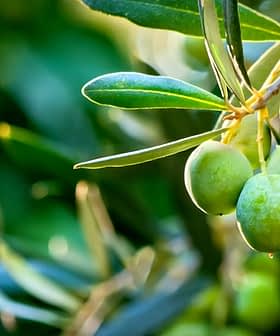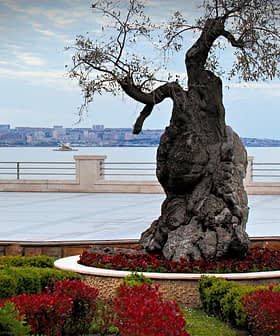The International Olive Oil Council was established in the Spanish capital of Madrid in 1959 and involved governments from European nations including France, Greece, Belgium, Portugal, Spain, the U.K. and, outside of the EU, Libya, Israel, Tunisia and Morocco.
“Fifty-seven years have gone by,” the since-renamed International Olive Council (IOC) said on its newsletter this week, “and the sixth International Agreement, to be known as the 2015 Agreement, is set to enter into force on January 1, 2017.”
Since its inception, the IOC has pulled out all the stops to try to improve olive oil quality and to create awareness among industry and the general public about the importance of quality.
“This new agreement will allow the IOC to continue apace in helping to bring about the harmonious, lasting development of the world of olive and olive oil sectors.
The statement said the new charter addresses a common complaint that IOC member voting shares are concentrated among large producers. “Several features mark off this Agreement from its predecessors, for instance it facilitates the participation of importer countries and its modified formula for calculating participation shares as an incentive for consumer countries to join.” The United States is not a member of the IOC.
The IOC said the new agreement will reassert its role as a “world documentation center” and channel for broadcasting information for the industry.
“It also focuses on national and international standards for the physico-chemical and organoleptic characteristics of olive oils, olive pomace oils and table olives aimed at preventing trade barriers and guaranteeing quality,” the IOC added.
As part of the new agreement, according to the Council, there will be a renewed emphasis on quality, a core feature of the IOC’s charter. The intergovernmental organization will continue to be involved with raising awareness of olive oil quality, offering trainings in olive orchards, in mills and on research and development projects aimed at improving practices and quality control programs in import markets.
“Nowadays quality is definitely light years ahead of what it used to be and it has become a key factor in the development of the sector,” said the IOC.
Looking back over the years
There are currently 17 members of the IOC producing 97 percent of the world’s olive oil and accounting for 96 percent of exports. The members are; Albania, Algeria, Argentina, the European Union, Egypt, Iran, Iraq, Israel, Jordan, Lebanon, Libya, Morocco, Montenegro, Syria, Tunisia, Turkey and Uruguay.
Since the inception of the IOC, global production of olive oil has almost tripled from one million tons in 1958/59 to just under three million in 2015/16. The increase over the years has not been uniform and often fluctuated depending on market conditions, volume and quality of crop productions, weather conditions and so on.
Up until the mid 1990s production had slowly increased and then levelled off for three consecutive crop years at around 1,800,000 tons. Before then, there were several bumper harvests in the early 1960s and what the IOC described as “an off year” in 1981/82.
Production moved up again in 1996/97 when it reached 2.5 million tons for the first time. From there, production continued to rise, eventually topping 3 million tons in 2003/04, 2004/05 and 2010/11 and peaking at an all time high with 3.3. million tons in 2013/14.
Production has swung back and forth much more sharply over the last five crop years from highs of 3.3 million tons in 2013/14 to a low of 2.4 million tons in 2012/13 and 2014/15.
“These large sways are not only due to the off-on pattern of the olive trees. Other causes are adverse weather conditions — heavy rain in some areas and very high temperatures in others — and numerous disease issues in certain producer countries.”






